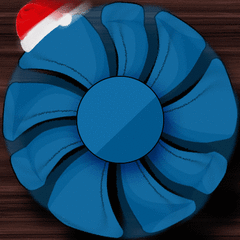-
Posts
985 -
Joined
-
Last visited
Awards
This user doesn't have any awards
Profile Information
-
Gender
Male
-
Location
London, UK.
-
Interests
Event Production, music, hardawre/software solutions, making things go bang.
-
Occupation
Lighting Technician
System
-
CPU
Intel Xeon E3 1231V3
-
Motherboard
Asrock H97m/itx ac
-
RAM
2x8GB HyperX Fury 1600MHz
-
GPU
EVGA GTX 1070
-
Case
Coolermaster Elite 130
-
Storage
500GB Samsung 850 EVO, 1TB WD Blue
-
PSU
Corsair CXM 600W
-
Display(s)
Asus VS228HR
-
Cooling
Corsair H55
-
Keyboard
Corsair K70 Brown
-
Mouse
Logitech G604
-
Operating System
Windows 10
Recent Profile Visitors
2,331 profile views
anothertom's Achievements
-
Ok, so yes, using it in usb-midi mode should be the solution.
-
If you're doing analogue out into the line in, then back out the headphone port then there will be some delay. Depending on what you're trying to do you will be better off doing different things. What are you actually trying to do?
-
Ok, so from what i'm seeing in the manual, you can either use the physical midi port or it will operate as a USB-midi device. So if you want to use it to control an midi instrument in a DAW then you can just connect it over USB to your computer and it will appear as a midi device. You will need a usb cable with a type B connector for the keyboard and either type A (a traditional USB port) or type C if that's what your computer has.
-
Ok, slow down. What keyboard have you got? And what are you trying to do?
-
If you just need midi in/out then a midi interface is all you need, as you already have the UM2. The basic inline cable interfaces work well, or there's lots of used interfaces on ebay, you don't need anything special.
-
Think of it like this: If i put a knife against your chest, and repeatedly pushed it very gently, you're going to know about it. If i do the same with a block of soft foam, then you wouldn't feel a thing. For isolating something you want foam hard enough that can hold the weight of the item without fully compressing, but not so hard that it transmits the vibrations.
-
Spikes are not what you want to use if you are trying to remove vibrations. Spikes couple, due to the very small contact area and very solid contact. Foam, where there is a cushioning interface spread over a larger area, is what you want to remove vibrations.
-
From my point of view, the only thing that's making this complicated is the involvement of linux as the source. I don't use linux and don't really have a device I can reasonably have as a test environment, so i don't really know if what I'm finding is of any use, otherwise I'd have tried some of the tools to see if they work.
-
From some googling it might be technically possible, but you'd probably go through a few software layers before hitting the network. @RixzZ have a look at this post using pulseaudio, slightly out of date, but should get you there.
-
Look at Icecast or Soundit both free options with varying levels of configuration/functionality. I use soundit, and for the most part works perfectly well, but it does crash occasionally, but only on the receiving device. You could also try pulseaudio. A one off purchase of Dante via and DVS would be cheaper even in the short term than either of the other options suggested, but wouldn't work over wifi so would need to be on a hard wired network. The other suggestions (source connect and Listento) are subscriptions, not particularly cheap, and are aimed at specific uses very different to what you're trying to do. Icecast i know has linux builds, not sure about soundit (their website has been down for a few days), Pulse only offers linux support. I don't think either source connect or listento have linux support and dante doesn't have linux versions.
-
Honestly, that would be a very annoying setup to manage. Not to mention that the number of times you'd be re-amping the signal is stupid, spending that amount on a DAC just to send it through a cheap/dodgy mixer is a waste. You would be far better served by streaming audio to a single device and then playing out through the modi/loki/magni stack. Have a look into soundit or icecast for a free option, if you want to shell out some cash then dante via and dante virtual soundcard would be the professional, more reliable and higher quality option. I would also suggest not getting a physical EQ, you won't touch it anywhere near as much as you're thinking you will. Start with equaliser APO, create some presets and keep the EQ in the digital realm.
-
To clarify, the toggle for channel 9/10 is to switch the output of that channel between the stereo output and the monitor output. When you set it to the stereo output it's going to both your speakers and back through the USB input to the computer. So voice chat is getting the mic as well as anything coming out of the computer. What you need to do is separate the input and output sides of your audio setup. So either use a separate device for the output, or more simply change the output the speakers are using to the monitor outputs. You can then route the USB channels through the monitor output so they don't get sent back through the input. So the stereo bus is sent to the computer's input carrying only the mic (and anything you plug into the other channels), and the monitor output is sent to the speakers and your headphones. The switch by the monitor level knob changes whether you hear the stereo bus through the monitor outputs or just the USB channels. Depending if you like to hear yourself you can turn this on or off, but you can't adjust level separately.
-

Speakers (HS5s) buzzing only when playing games (using USB Audio interface)
anothertom replied to Astroflash's topic in Audio
page 36, both ring and sleeve ties to ground on the main outputs. -
The general hissing sound could be just a high noise floor, this can be caused if your gain staging isn't set up quite right if you're using the DAC in the interface. Alternatively if the CTH has a high noise floor by itself then that would be an issue. No idea what the clicking could be, other than possibly a broken connection or solder joint which sometimes separates then reconnects.










